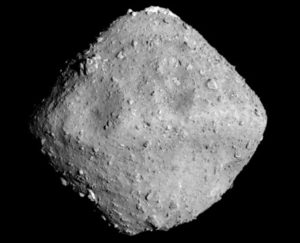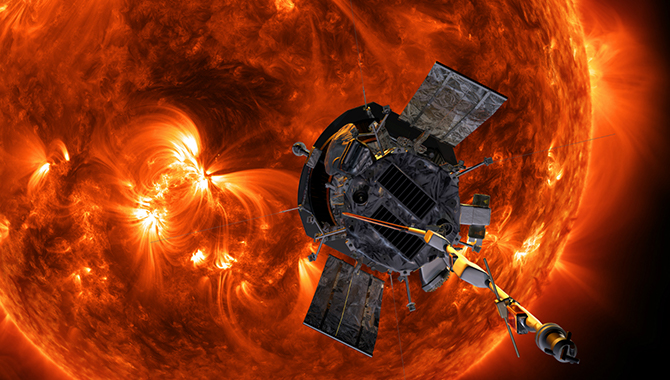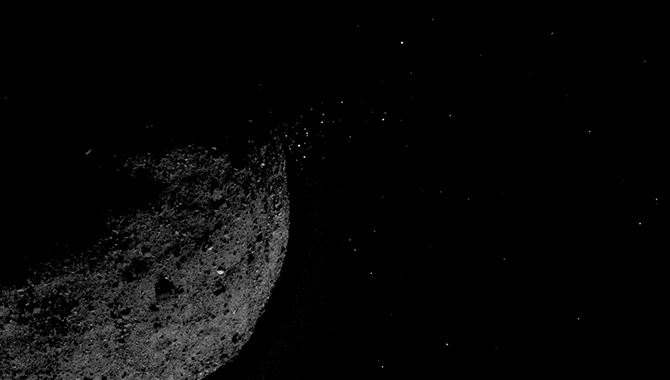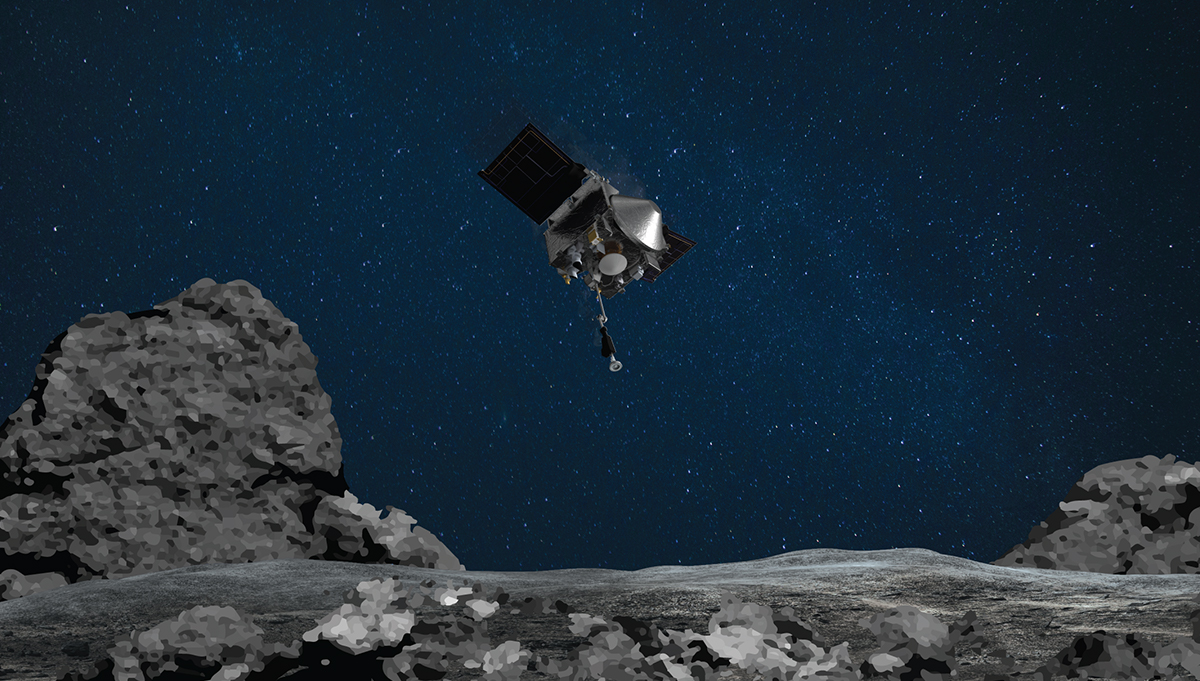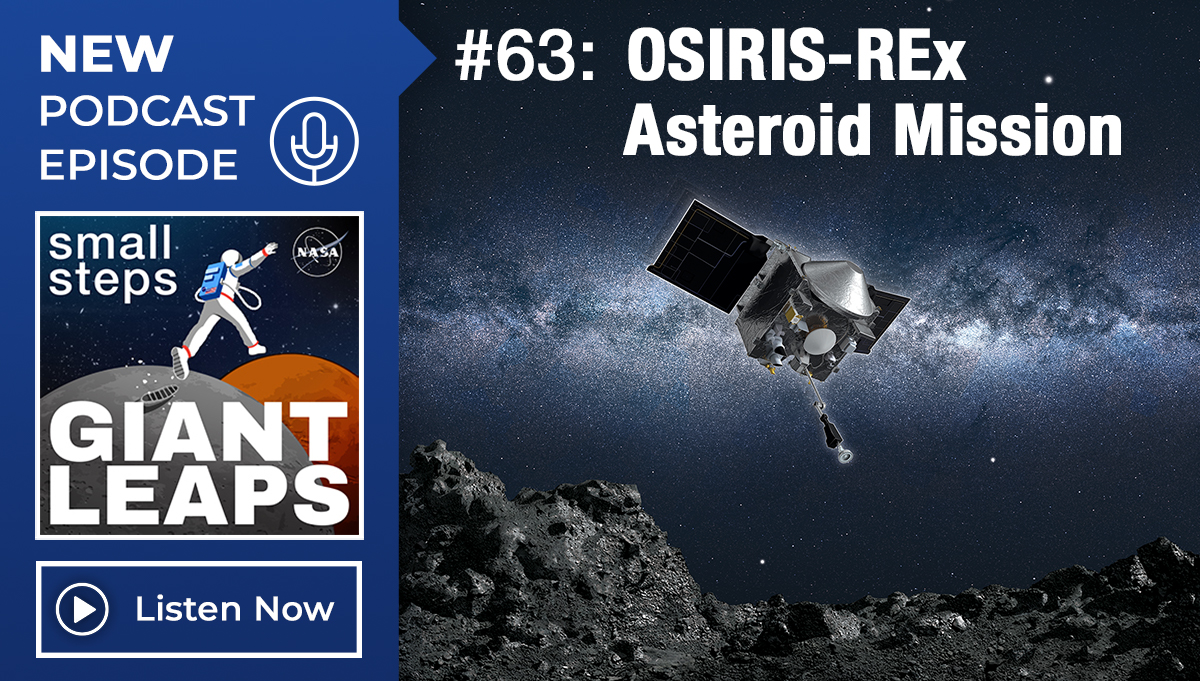
The Hayabusa2 spacecraft is a modified version of the Hayabusa design.
Credit: NASA
NASA and JAXA will share samples of asteroids to advance scientific discovery.
In the early morning hours of December 6, a bright light streaked across the desert skies over south Australia. What initially appeared as a meteor was actually the reentry capsule of Hayabusa2, a spacecraft developed by the Japan Aerospace Exploration Agency (JAXA) to collect samples from a distant asteroid and return them to Earth.
The capsule deployed a parachute and landed safely—with advanced permission—in the desert terrain of the Woomera Prohibited Area, more than 47,000 square miles of Australian military testing facilities. A team from JAXA boarded a helicopter and flew into the early morning darkness, tracking signals from the capsule, locating it shortly after daybreak and recovering it later that morning.
Preliminary analysis indicated that the capsule’s sample container landed with the seal created in space still intact. On December 7, the team extracted gas from inside the sample container at a specially equipped clean room in Australia and began the work of determining if the gas is from the asteroid sample. The sample container was then to be shipped to Japan for analysis of the material within.
It was the end of a fantastic six-year voyage for the capsule, which at one point was aboard Hayabusa2 about 190 million miles from Earth, at asteroid Ryugu, a potentially hazardous near-Earth object a little more than half a mile in diameter. Hayabusa2 deployed a series of rovers onto the asteroid’s surface carrying cameras, thermometers, an infrared spectrometer, magnetometer, and radiometer to take measurements.
As with NASA’s OSIRIS-REx mission at asteroid Bennu, the Hayabusa2 team discovered that Ryugu’s surface was surprisingly rugged, marked with large rocks and boulders. The team delayed sample collection to identify the best collection site available, ultimately selection one with a radius of just 10 m., one-fifth of their original goal. They also had to spend time practicing the intricate maneuvers required to gather samples at the smaller site. Hayabusa2 collected two samples from Ryugu—a surface sample and a subsurface sample that was gathered from a crater the spacecraft created.
For the surface sample, the spacecraft deployed a sampler horn, then fired a small projectile into the nearby surface and collected the surface material that was dislodged and settled back to the surface through microgravity. The subsurface sample collection was more complex.
“One of our responses is the impactor. We will fire a metal slug at the asteroid’s surface at a speed of 2 kilometers per second, create an artificial crater, and extract a subsurface sample,” Hitoshi Kuninaka, Ph.D. explained in a JAXA interview in 2014, near the time Hayabusa2 was launched. Kuninaka, who was the Hayabusa2 Project Manager at the time, is now the Director General of ISAS/JAXA.
“Asteroids contain the history of the Solar System’s birth, but due to the influence of the Sun and solar wind, their surface is weathered. Therefore, we want to get inside and investigate fresh materials,” Kuninaka said.
To create this crater, Hayabusa2 released the Small Carry-on Impactor (SCI), a cylindrical copper projectile about 11.8 inches in diameter backed by an explosive charge. After maneuvering the spacecraft to safety, the charge detonated, sending the projectile into the surface of Ryugu at more than 4,400 miles per hour.
This created a crater about 33 ft. in diameter, leaving dozens of boulders as large as a 1 ft. in diameter strewn over the asteroid’s surface, and jostling boulders 120 ft. from the impact site. The spacecraft placed reflective target markers at the site and later moved in to gather a sample from the fresh material.
The safe return of the capsule is the beginning of what will likely be a journey of significant scientific discovery that will come from analysis of the two asteroid samples, a portion of which will be shared with NASA. These will be augmented by the scheduled arrival in September 2023 of the OSIRIS-REx Sample Return Capsule (SRC).
“Our mutually beneficial partnership with Japan allows us to share samples from NASA’s mission at Bennu and receive a portion of JAXA’s sample from Ryugu. Together, we will gain a better understanding of the origins of our solar system, and the source of water and organic molecules that could have seeded life on Earth,” wrote Dr. Thomas Zurbuchen, Associate Administrator for NASA’s Science Mission Directorate at NASA, in a blog post.
Scientists believe asteroids such as Bennu and Ryugu are ancient artifacts from the formation of the solar system that could hold clues to important questions about the role of prebiotic molecules in the origins of life and how volatiles are delivered throughout the solar system.
“Exploration is in the human heart, so this is the path we must walk,” Kuninaka said in 2014. “Thus, we will be able to see entirely new things, which is a supreme joy. This is why we undertake epic journeys into space.”






